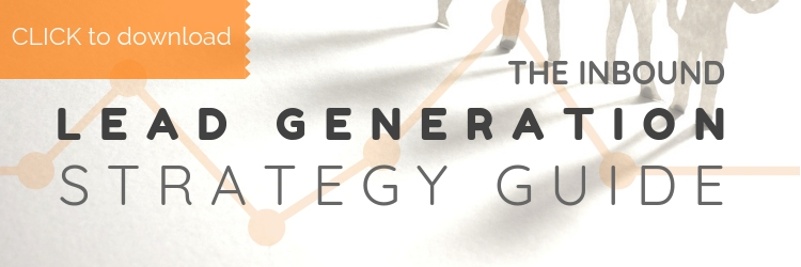There are many lead generation strategies that could work for your business... Inbound is one of the best options for B2Bs
At Orange Pegs we don't believe in lead generation secrets — we want every business to understand how to leverage B2B leads to grow. That's why we put together this lead generation marketing plan template for B2Bs that want to grow their customer base through digital marketing and transparent sales processes.
Take a look, and let us know what you think!
Marketing Campaign Template
To start, you should have a solid understanding of certain marketing metrics and targeting data to get the most out of this. Numbers help us understand the path to success. Targeting profiles help us get started on the right foot with messaging.
That said, if you don't have access to those types of numbers, this article could be a great starting point to figure out what kind of marketing strategy you want to deploy.
1. Set your marketing goals
the inbound lead generation process is all about finding your money - or... your money finding you. But we have to be laser-focused on who our exact customers are and how many of them we need to call the marketing investment a success. And we have to think about the starting point before we can understand how it all ends.
Try to be realistic and base your numbers on reality if possible. For inbound, this is what we want to answer:
- How many new customers do we need in a specified time frame?
- How many leads do we need to get to convert those customers?
- How many visits do we need to get the appropriate number of leads?
If you don't know what your traffic or lead conversion numbers are like, you can use some industry averages to set your benchmarks. For example, it's not uncommon for only 1% of your visitors to convert into leads. It's also not uncommon for you to convert 5% of your leads into customers.
2. Build your Targeting strategy
Targeting strategy comes down to 2 main concepts:
- Your ideal buyer personas
- Your ideal buyer profiles
Personas are the fictional representations of your perfect customer. The human behind the decisions and influence of any successful deal.
Profiles are the ideal and non-ideal attributes of the businesses where your personas can be found.
The persona build-out is the cornerstone of any good lead generation strategy. It involves more than what's in your head - it involves connecting with your ideal customers and asking questions about:
- Demographics
- Their role at work
- A day in their life
- What challenges they face every day
- What solutions they're constantly looking for
- Where they go for information
Not only will you benefit from knowing this from a marketing perspective, but you'll get some incredible insights as to how to improve production.
3. Build your content marketing strategy
Journey mapping is a process that comes after persona build-outs, where we identify positive and negative triggers that lead people to your website at the 3 different stages of the buyer's journey (Awareness, Consideration, and Decision).
This is the cornerstone to your lead generation planning and overall content marketing strategy, and the process itself will often reveal your lead magnets and all of the supporting collateral. Usually, I'll walk away with:
- Lead generation content ideas
- Blog titles
- Email subject lines
The next step is to start running those ideas through Google (bonus - get the Chrome extension "Keywords Everywhere" to get some amazing insights) until you find keywords that represent the challenges exposed in the alignment process that match up with your service and have good traffic value.
4: Develop your SEO strategy
SEO today is more than keywords... it's about user experience, and... well... keywords.
We start with a central keyword (or "pillar content") - wherein we frame a single page on your website and determine that it's critical to get traffic there.
For example, we have a page on our website called "Lead Generation Services." That's the "pillar" content. Pillars can be landing pages or site pages. Supporting pages can also be landing or site pages, in addition to blog posts.
For this pillage page, we are supporting it with 10 blog posts. Mind you, some of them are new. Most are older, repurposed posts where we identified some SEO juju, but weren't created to support the page titled "lead generation services."
We made several discoveries when going through the journey mapping exercise because we were trying to frame "inbound marketing" in a way that was more meaningful to people searching for our services. So, we made the changes while trying to retain as much of the original stuff as possible.
Here's a graphic showing you how it's set up in Hubspot (notice how we have a post topic open still):

5. Develop your offer
Your offer can be anything from a white paper to an online calculator... and anything else you can think of that's distributable in digital form.
I have seen others use it to send out free books or one-sheets as well, but that can get expensive and makes automation impossible.
6. Promote your offer
Blogging is great for driving more traffic because you can leverage and supplement your keyword strategy with each post you publish. In addition, blogging provides opportunities for lead conversions, by framing ideas tied to content downloads.
Social media is a great way to get your blog posts and offers in front of people.
Paid ads is also a great way to get eyes on everything.
Create your plan. Follow it.
7. Nurture your leads
Email marketing is a great way to nurture those new leads into buying mode, or move them to the side and out of sight from sales, so they're not focusing their energy on dead-end deals.
With the right software, much of this can be automated.
Here's a good sequence you can follow:
- Kickback email (IMMEDIATE - has a link to the offer, and the next step you want them to take)
- Nurture (3 - 4 days later - has a link to the next stage of the buyer's journey)
- Survey (3 - 4 days later - takes their pulse and asks for advice for improving)
- Sell (2 - 3 days later - Go for the close)
- Nurture (4 - 5 days later - ask to take action... maybe frame with a testimonial if the bottom of the funnel)
- Bail (4 days later - if they're not biting, let them know you notice, then tone it down from there)
8. Experiment cycles
Today, the internet is so saturated with content, it takes a lot to stand out. And, what worked yesterday isn't working as well today. The key to staying ahead is to get into a regular cycle of experimentation. This will help you hone in and expand on marketing efforts that yield positive results and steer away from everything else.
Mechanically, that means your methodology template includes:
- 2-week sprint cycles, not editorial calendars
- Follow a rigid process of experimentation
- Marketing initiatives are based on your company's North Star metric
Philosophically, it means:
- Constantly evaluate strengths weaknesses opportunities and threats
- Leverage data to inform decision-making
- Risk failure
- Don't be afraid to pull the plug on ideas that don't pan out
- Sales, Service, and Marketing teams work together
Get the inbound marketing campaign template for free
If this resonates with you, check out our Inbound Lead Generation Strategy Guide that we created for b2b business leaders. It's a lead generation plan that starts with first attraction and ends with closed deals:



